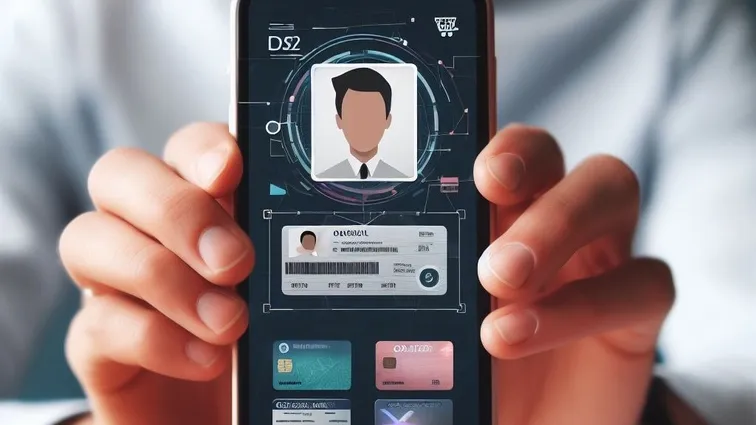The European Digital Identity Wallet, which aims to make it easier for EU citizens to purchase online, sign documents with a qualified electronic signature or manage and share personal documents such as driving licences or university diplomas, has moved a step closer again. A final agreement on the text of the eIDAS Regulation, which we refer to herein as the eIDAS 2.0 Regulation, has been reached at the European Union level. It brings about major changes leading to the coming era of the digital economy, which individuals and organisations should prepare for, as they will provide a competitive advantage. And we will guide you through them.
The eIDAS 2.0 Regulation represents a major novelty in the field of digitalisation and will affect us all - individuals and organisations, including public administration entities. Following the expected formal approval of the current proposal in early 2024 and the expiry of the relevant implementation deadlines, eIDAS 2.0, or at least a European Digital Identity Wallet (the “Wallet”), will become an essential part of our lives.
For those organisations that prepare for the Regulation, the door to an interesting competitive advantage opens. Conversely, organisations that will not take it into account could, at the very least, find it difficult to maintain their market position.
Conceptual changes
Like the existing eIDAS Regulation, the eIDAS 2.0 Regulation can be divided into two, basically separate areas. The first area is electronic identification, enabling users to prove and verify their identity in a digital environment. The second area are trust services, including such sections as electronic signature, electronic seals or electronic time stamps.
The new Regulation entails changes especially in the area of electronic identification, namely with the introduction of the Wallet. It is designed primarily as a mobile phone application that we will be able to use towards private and public entities. We will be able to upload basically any data related to us to the Wallet - a university diploma, a medical prescription, or tickets to social events or airline tickets tied to our name. We will focus on the use of this application in practice in our next post in the upcoming series of articles here on the blog.
Although the eIDAS 2.0 Regulation does not bring conceptual changes in trust services, this does not mean that there are no changes. It introduces, for example, electronic attribute validation, electronic archiving services, electronic ledgers, and the management of remote electronic signature and seal creation devices. We will also be dealing with these new features in our upcoming series.
Positive impact on everyday life
The eIDAS 2.0 Regulation brings the possibility of seamless access to digital services across the EU, simplifying and securing essentially all online transactions[1]. The Wallet will allow EU citizens to prove their identity with the highest level of security both online and offline.
The Wallet will play a key role in various aspects of our daily lives, such as online shopping, signing documents with a qualified electronic signature, or managing and sharing personal documents such as driving licences or university diplomas.
Importance of regulation
The Wallet will change the current concept of electronic identification in the EU, which will inherently change the way the digital economy has functioned so far.
EU-wide sales potential of private entities
For example, for online purchases, the customer will be able to instantly provide his personal details - in addition to his name and surname, for example, his age or desired place of delivery. E-shop operators will not be forced to fill in traditional forms and can be sure that all the information provided by the customer is correct. In this way, customers can easily and securely log in across different e-shops in the EU. Customers should also be able to pay for the goods through the Wallet.
Use of qualified electronic signatures
We will also be able to sign electronic documents with a qualified electronic signature through the Wallet[2]. This is the highest level of electronic signature, which is considered to be equivalent to a handwritten signature within the meaning of the eIDAS 2.0 Regulation. The use of qualified electronic signatures increases trust between business partners and consumers in the EU and is a key element for building the digital economy.
In the Czech Republic, the qualified electronic signature may also play a role in the more massive use of the legal option of electronic replacement of the requirement for an officially certified signature under the Digital Services Act. We wrote about this here.
Reduced costs and more efficient business
Thanks to the ability to automate a number of processes, the Wallet has the potential to significantly reduce costs for organisations and make their business more efficient overall. One example is simplifying the process of hiring new employees. Through the Wallet, all relevant information can be made available to the new employer in a trustworthy and completely reliable way, even remotely, with just a few clicks. This will include the employee's identification data, university diploma, other professional qualifications, certificate of no criminal record, doctor's certificate, bank account number, etc.
When will the changes come into effect?
The final version of the eIDAS 2.0 Regulation should be legislated and published in the Official Journal of the EU in early 2024. This will be followed by implementation deadlines, which will determine exactly when the changes will be mandatory in practice.
Widespread implementation of the Wallet is expected to occur during 2026. Given the extent and impact of these innovations, it is essential that organisations start proactively adapting to new practices and technologies now to be ready for the coming digital economy era and to compete in the EU's digital single market.
How we can help you
From the very beginning, we have been following this topic in detail and actively lecturing and educating the public from a legislative, practical and technical perspective. We believe that thanks to our knowledge and experience we can be an ideal partner in the implementation and integration of new digital solutions into your business processes. Thanks to our experience, we offer you fully customised consultations and top legal and tax support in the transition to the new European digital identity system.
Stay tuned, because in the follow-up posts of our series, we will take a closer look at specific aspects of the eIDAS 2.0 Regulation, including specific features of the Wallet, its use in practice, and new trust services.
- [1] – The published press release specifies, for example, that it will be possible to report possible violations of the Wallet users’ personal data protection.
- [2] – The published press release specifies, for example, that individuals should be able to sign for their private purposes free of charge.







